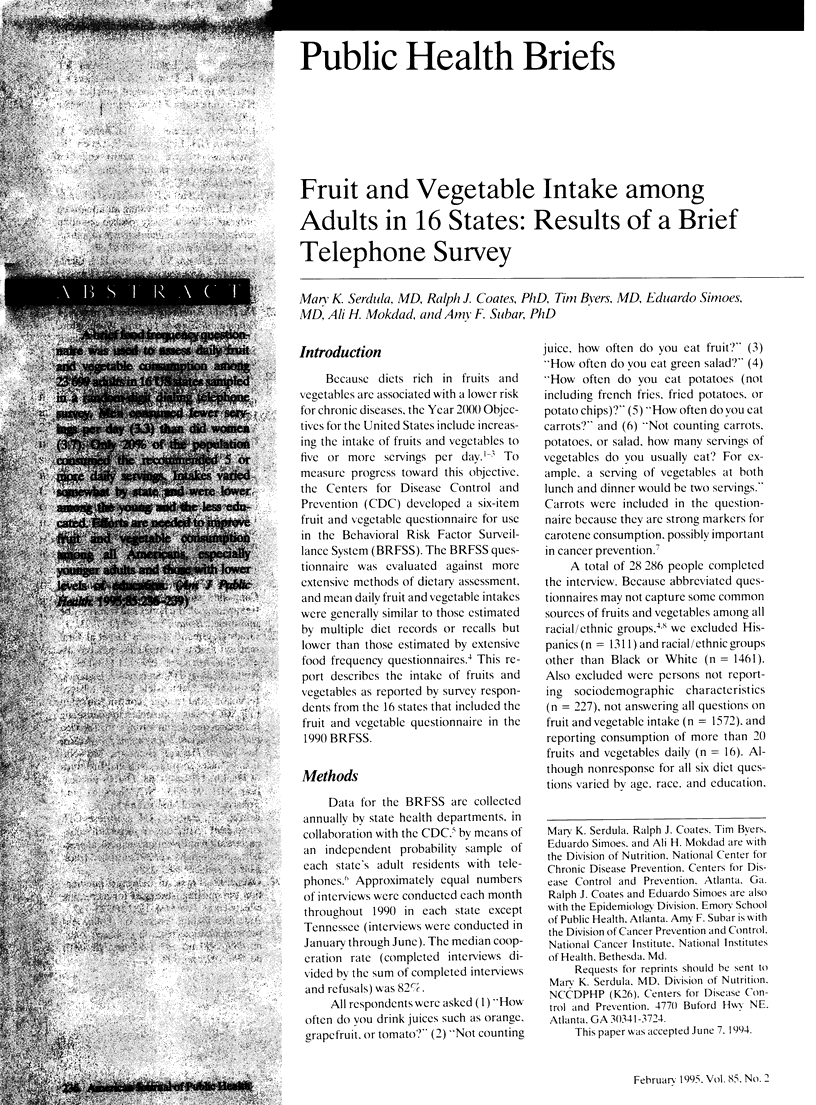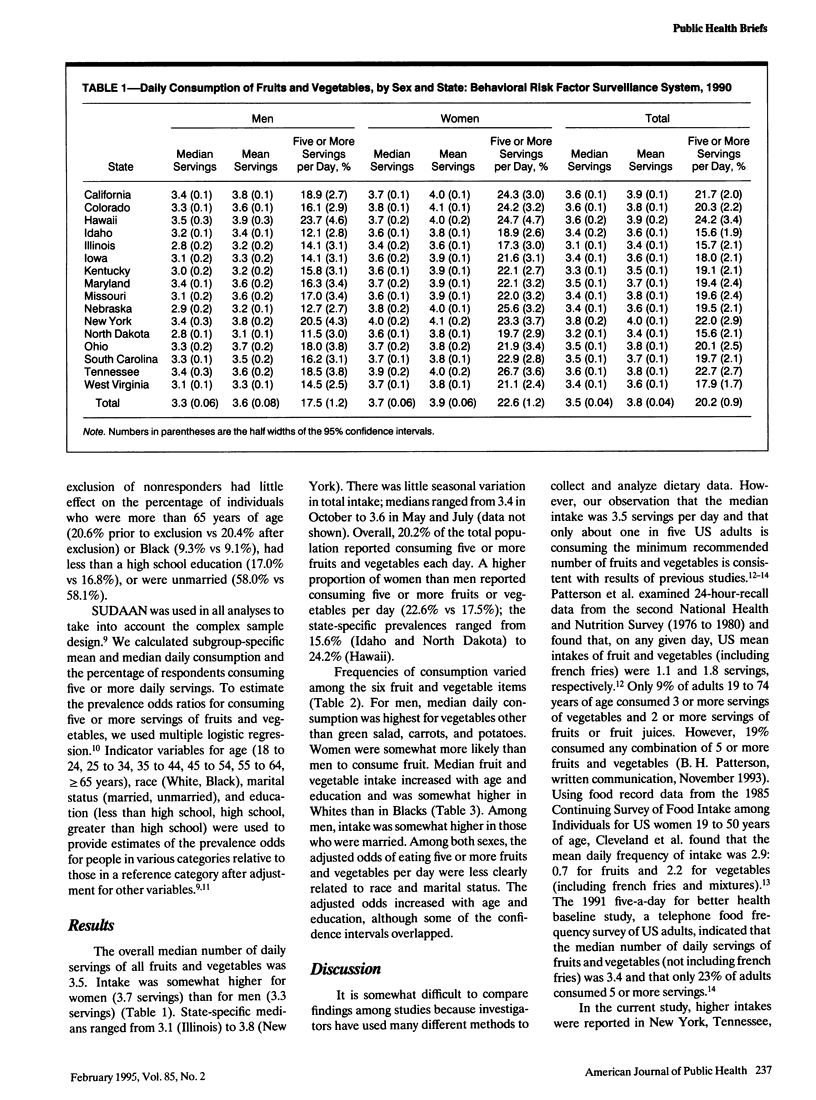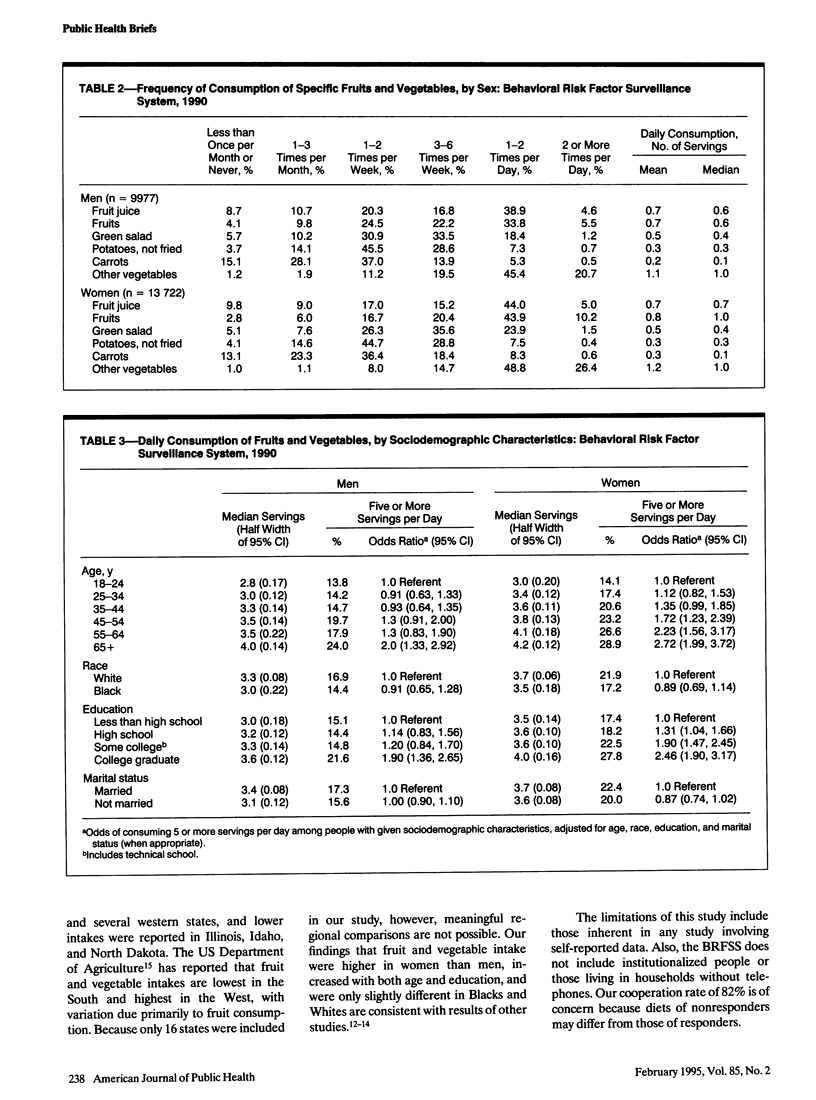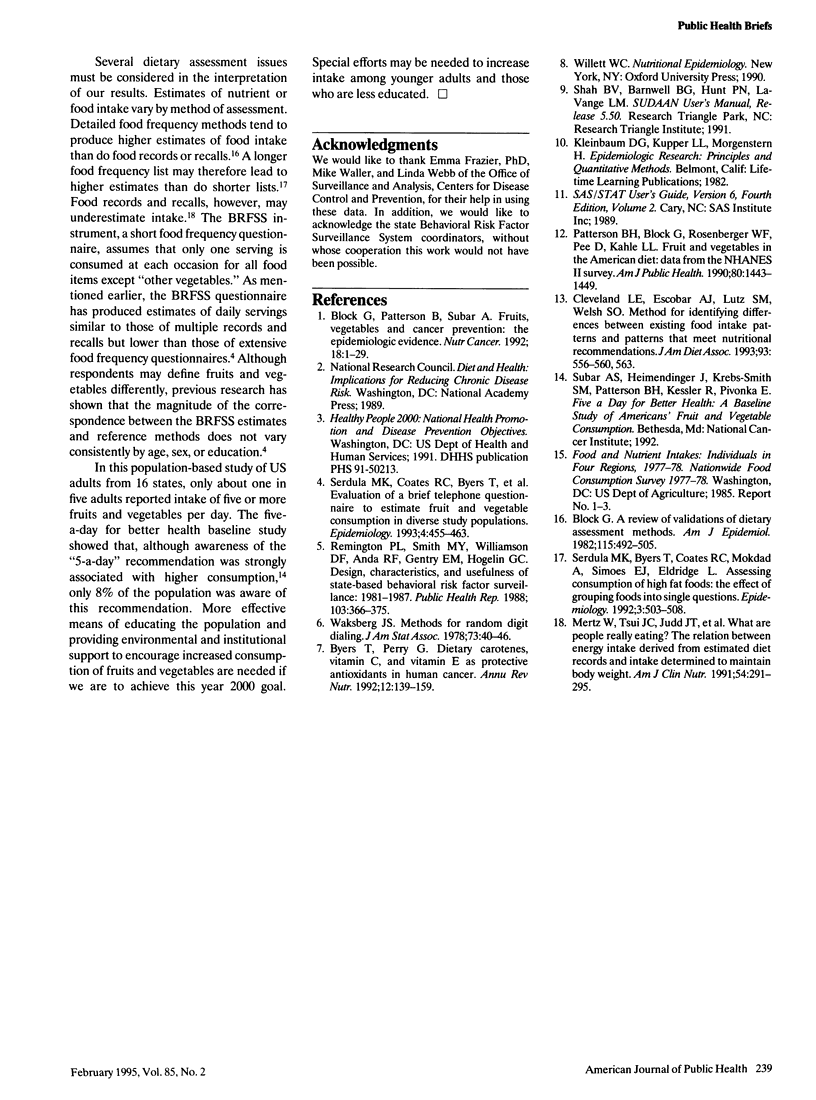Abstract
A brief food frequency questionnaire was used to assess daily fruit and vegetable consumption among 23,699 adults in 16 US states sampled in a random-digit dialing telephone survey. Men consumed fewer servings per day (3.3) than did women (3.7). Only 20% of the population consumed the recommended 5 or more daily servings. Intakes varied somewhat by state and were lower among the young and the less educated. Efforts are needed to improve fruit and vegetable consumption among all Americans, especially younger adults and those with lower levels of education.
Full text
PDF



Selected References
These references are in PubMed. This may not be the complete list of references from this article.
- Block G. A review of validations of dietary assessment methods. Am J Epidemiol. 1982 Apr;115(4):492–505. doi: 10.1093/oxfordjournals.aje.a113331. [DOI] [PubMed] [Google Scholar]
- Block G., Patterson B., Subar A. Fruit, vegetables, and cancer prevention: a review of the epidemiological evidence. Nutr Cancer. 1992;18(1):1–29. doi: 10.1080/01635589209514201. [DOI] [PubMed] [Google Scholar]
- Byers T., Perry G. Dietary carotenes, vitamin C, and vitamin E as protective antioxidants in human cancers. Annu Rev Nutr. 1992;12:139–159. doi: 10.1146/annurev.nu.12.070192.001035. [DOI] [PubMed] [Google Scholar]
- Cleveland L. E., Escobar A. J., Lutz S. M., Welsh S. O. Method for identifying differences between existing food intake patterns and patterns that meet nutrition recommendations. J Am Diet Assoc. 1993 May;93(5):556-60, 563. doi: 10.1016/0002-8223(93)91816-9. [DOI] [PubMed] [Google Scholar]
- Mertz W., Tsui J. C., Judd J. T., Reiser S., Hallfrisch J., Morris E. R., Steele P. D., Lashley E. What are people really eating? The relation between energy intake derived from estimated diet records and intake determined to maintain body weight. Am J Clin Nutr. 1991 Aug;54(2):291–295. doi: 10.1093/ajcn/54.2.291. [DOI] [PubMed] [Google Scholar]
- Patterson B. H., Block G., Rosenberger W. F., Pee D., Kahle L. L. Fruit and vegetables in the American diet: data from the NHANES II survey. Am J Public Health. 1990 Dec;80(12):1443–1449. doi: 10.2105/ajph.80.12.1443. [DOI] [PMC free article] [PubMed] [Google Scholar]
- Remington P. L., Smith M. Y., Williamson D. F., Anda R. F., Gentry E. M., Hogelin G. C. Design, characteristics, and usefulness of state-based behavioral risk factor surveillance: 1981-87. Public Health Rep. 1988 Jul-Aug;103(4):366–375. [PMC free article] [PubMed] [Google Scholar]
- Serdula M., Byers T., Coates R., Mokdad A., Simoes E. J., Eldridge L. Assessing consumption of high-fat foods: the effect of grouping foods into single questions. Epidemiology. 1992 Nov;3(6):503–508. doi: 10.1097/00001648-199211000-00007. [DOI] [PubMed] [Google Scholar]
- Serdula M., Coates R., Byers T., Mokdad A., Jewell S., Chávez N., Mares-Perlman J., Newcomb P., Ritenbaugh C., Treiber F. Evaluation of a brief telephone questionnaire to estimate fruit and vegetable consumption in diverse study populations. Epidemiology. 1993 Sep;4(5):455–463. doi: 10.1097/00001648-199309000-00012. [DOI] [PubMed] [Google Scholar]


